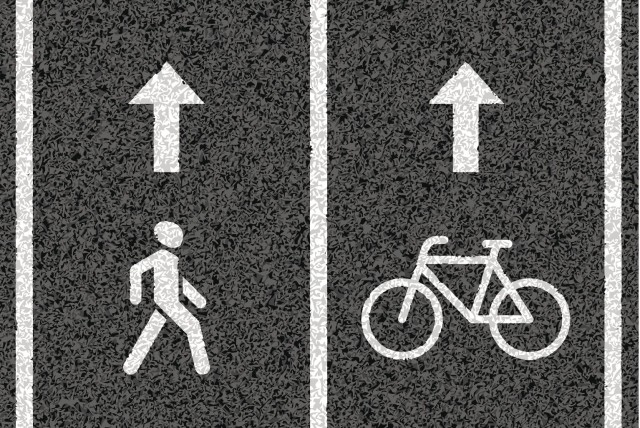“It’s watershed in terms of supporting walking and biking, but it’s also a watershed in how it is being targeted," Ward-Waller said. "I think it’s a new standard about how we are approaching transportation and prioritizing things like public health and sustainability and making sure equity is a lens.”
There are plenty of studies linking improved health to walking or biking.
According to Every Body Walk, walking 20 to 25 minutes a week can extend life by several years. A 45-minute daily walk halves the odds of catching a cold. Walking also leads to improved outcomes with depression, arthritis and dementia.
In financial terms, the California Bicycle Coalition says every $1 million invested in bikeways returns between $1.2 million and $3.8 million in health care savings.
Dave Snyder, executive director of the coalition, said because the amount of money for bike/walk programs is so much higher than what Sacramento has offered in the past, it is drawing welcome attention. Before, he said, the programs for walking and biking were funded from small, discreet pots of money and could almost be written off as "cute ideas."
"Now it’s a line item in the transportation budget, and we hope people will say 'That’s a good program why are we just giving this amount?'” Snyder said.
Snyder said if you look closer, it amounts to only 1 percent of the state's overall transportation budget.
He said his group is especially excited to see so-called "first and last mile" projects funded. These funds would help get people easily and safely from their homes or offices to mass transit or major bike paths.
"Often between two points there are two transit stops that is quick and easy, but there is a half mile missing on either side. So it’s practically not a useful transit system. If we can solve that last mile problem and make it much easier to get to your stop, then transit becomes much easier and more viable," Snyder said.
Initial proposals for the program are due at the end of May. Snyder said there has been so much enthusiasm about ATP he expects the funding to be oversubscribed by a factor of 10.
For Tony Dang, deputy director of California Walks, the public health benefits are not just the mental and physical benefits that come from moving. Dang says by getting cars off the road, that also decreases asthma rates.
He said he's excited to see the funding going to unexpected populations.
"I think walking and biking may seem very sexy these days and it skews younger, but our organization would like to see programs for seniors," Dang said. "We’re going to see more and more people age and we’d like them to age in place with dignity. And when people get older and can’t drive, we’d like them to still be able to see their family and get to their friends and the store."
One of the ways that can happen is by doing audits of infrastructure near senior centers. It may also involve programs that create senior walking groups.
ATP also promises to help health by addressing pedestrian safety issues, Dang said. 2013 was a particularly bad year for pedestrian fatalities in the Bay Area.
"San Francisco and San Jose had record highs last year. We need to invest in streets in a way that not just benefits car drivers," Dang said. "We need street to be safer for everyone, whether on foot, bike or in a car."
